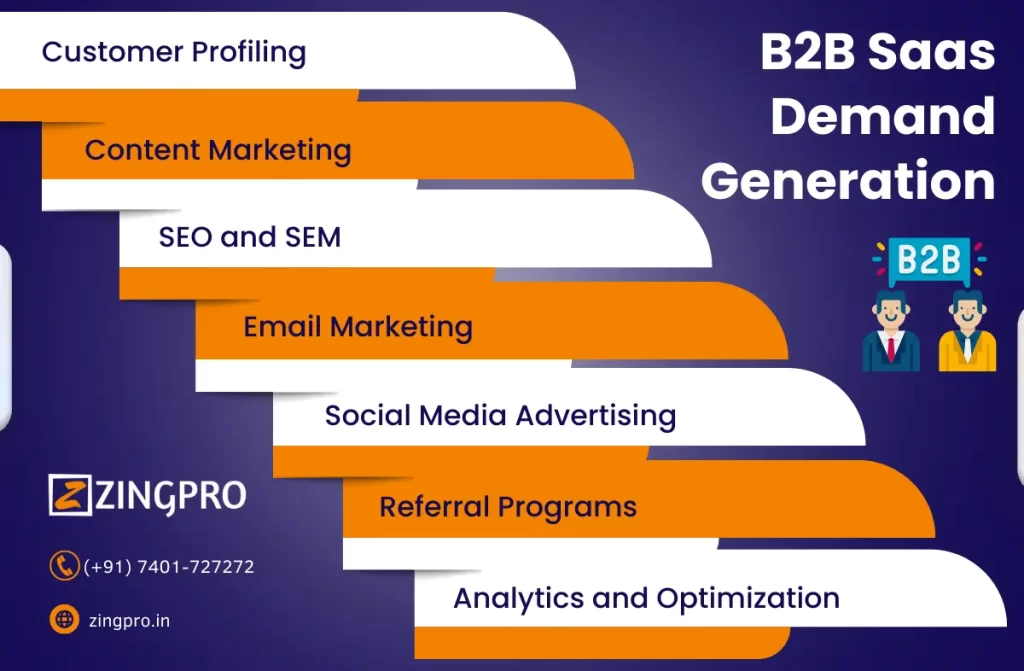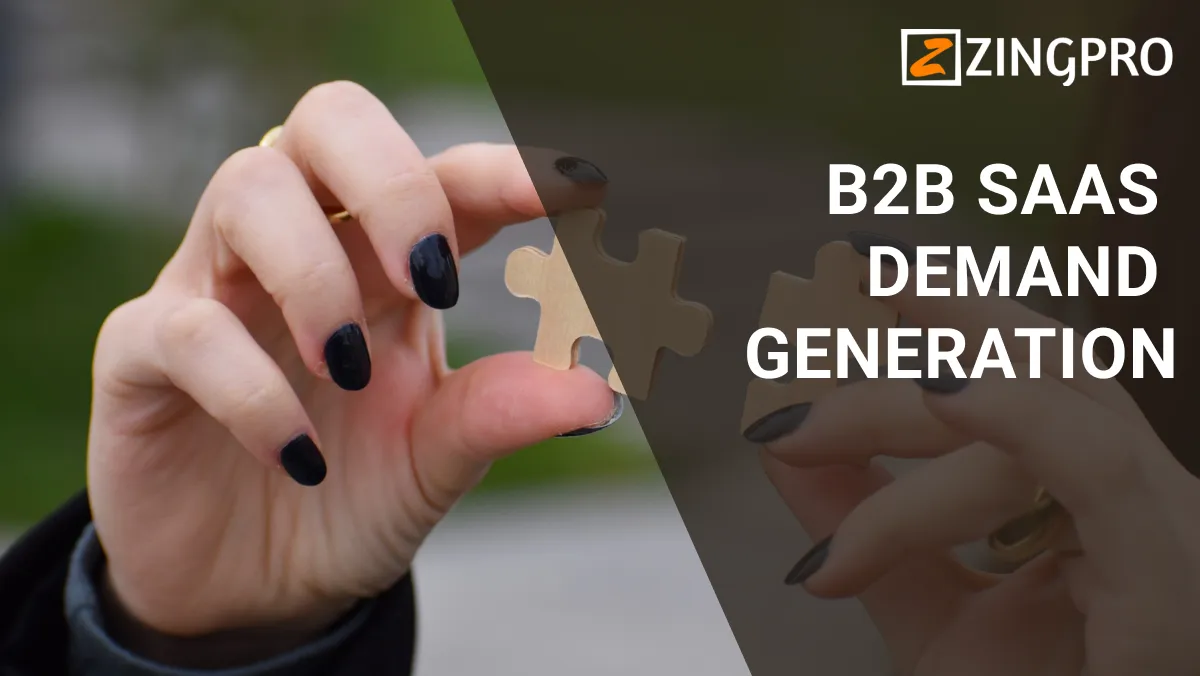In the dynamic world of B2B SaaS demand generation, SaaS demand generation has emerged as a cornerstone for sustainable growth. Unlike B2C models, B2B SaaS demand generation necessitates a more precise and personalized approach due to the complexity of the sales cycle, the diversity of stakeholders involved, and the longer decision-making timelines.
To navigate these intricacies successfully, businesses are increasingly turning to targeted strategies that align with the specific needs, pain points, and aspirations of their prospective clients.
Understanding Targeted B2B SaaS Demand Generation
Targeted B2B SaaS demand generation revolves around identifying and focusing on a niche audience with the highest potential to become qualified leads and eventual customers. This approach deviates from casting a wide net in favor of a more refined approach that prioritizes quality over quantity.
Instead of seeking mass attention, businesses utilizing targeted strategies aim to capture the attention of decision-makers who are more likely to find value in their SaaS demand generation.

Segmentation and Persona Development
The foundation of targeted B2B SaaS demand generation lies in comprehensive segmentation and persona development. By categorizing potential customers into distinct groups based on factors such as industry, company size, pain points, and goals, businesses can create specific and relevant content that resonates with each group.
Developing detailed buyer personas within these segments enables the tailoring of messages and offers to address the unique challenges faced by each group.
Account-Based Marketing (ABM)
Account-Based Marketing (ABM) is a strategic approach that takes personalization to the next level. In ABM, individual high-value accounts are treated as unique markets, and personalized campaigns are crafted for each account.
This involves creating highly customized content, messages, and experiences that cater specifically to the needs of that account. ABM aligns closely with targeted B2B SaaS demand generation by focusing resources on accounts that are most likely to yield substantial returns.
Content Personalization
Content remains a pivotal tool in targeted B2B SaaS demand generation. With targeted strategies, the content is tailored to the preferences and challenges of the intended audience. This involves producing content that addresses specific pain points, offers solutions to industry-specific challenges, and showcases how the SaaS demand generation can be the answer to their problems.
Multichannel Engagement
Reaching the target audience through multiple channels is another essential aspect of targeted B2B SaaS demand generation. This approach recognizes that decision-makers engage with content and information through diverse platforms such as social media, industry forums, email, and webinars.
A well-coordinated multichannel strategy ensures that the message is consistently delivered across various touchpoints, increasing the likelihood of engagement and response.
Data-Driven Insights
Data plays a critical role in targeted B2B SaaS demand generation. By analyzing user behavior, engagement patterns, and conversion metrics, businesses gain valuable insights into which strategies are resonating and driving results.
These insights allow for continuous refinement of campaigns, ensuring that resources are invested in strategies that have the highest impact.
Data-driven insights form the backbone of B2B SaaS demand generation. Analyzing user behavior, engagement metrics, and conversion patterns enables strategic refinement, maximizing the impact of campaigns, and optimizing resource allocation.
Personalized Email Campaigns
Email marketing remains a powerful tool for targeted B2B SaaS demand generation when approached with personalization in mind. Crafting personalized email campaigns that address the pain points of the recipients and presenting how the SaaS demand generation can solve their challenges can lead to higher engagement rates and conversions.
Crafting personalized email campaigns in B2B SaaS is a potent demand generation strategy. Tailored content addressing pain points and value propositions nurtures leads, increasing engagement and driving conversions effectively.
Leveraging Influencer Networks
In some B2B industries, influencer networks can play a pivotal role in targeted B2B SaaS demand generation. Identifying and collaborating with industry influencers who resonate with the target audience can amplify the reach and credibility of the SaaS demand generation.
In B2B SaaS, tapping into influencer networks cultivates industry credibility, expands reach, and accelerates trust-building, enhancing demand generation marketing for sustainable growth and B2B Marketing Automation in market presence.
Benefits of B2B SaaS Demand Generation
- Consistent Pipeline: Demand generation ensures a steady influx of potential leads, sustaining a healthy sales pipeline.
- Targeted Audience Reach: It allows precise targeting, reaching the right audience segments more effectively, thereby increasing conversion rates.
- Brand Visibility and Awareness: By consistently engaging with the target audience through various channels, it boosts brand recognition and market presence.
- Lead Nurturing: Demand generation strategies facilitate the nurturing of leads, guiding them through the sales funnel by providing relevant content and experiences.
- Data-Driven Insights: It provides valuable data and insights about customer behavior, preferences, and market trends, enabling better decision-making and refinement of strategies.
- Cost Efficiency: Compared to traditional marketing, demand generation in B2B SaaS often proves more cost-effective, maximizing returns on investment.
- Scalability: Once established, a robust demand generation system can be scaled efficiently to accommodate business growth and evolving market demands.
What are some effective channels for B2B SaaS demand generation?
Effective channels for B2B SaaS demand generation include content marketing, social media advertising, search engine optimization (SEO), email marketing, and webinars. Content marketing involves creating valuable content like blog posts, whitepapers, and videos to educate and engage potential customers.
Social media advertising allows targeted promotion to specific audiences. SEO improves organic visibility in search engines, while email marketing and webinars help nurture leads and showcase the value of the SaaS product.
What role does content customization play in B2B SaaS demand generation?
Content customization in B2B SaaS demand generation involves creating content that directly speaks to the challenges, goals, and preferences of different segments within the target audience. This personalized approach helps establish credibility, showcase expertise, and build trust with potential customers.
By delivering content that resonates with each segment, SaaS companies can capture attention and drive higher engagement, ultimately leading to more qualified leads.
How do free trials or freemium models contribute to B2B SaaS demand generation?
Offering free trials or freemium models is a powerful strategy for B2B SaaS demand generation. It allows potential customers to experience the product firsthand, helping them understand its value and functionality.
Free trials can generate high-quality leads as users who opt-in are often genuinely interested in the solution. By providing value upfront, SaaS companies can build trust, increase conversions, and create a pipeline of qualified prospects.
Conclusion
As B2B SaaS landscapes continue to evolve, the significance of targeted demand generation strategies cannot be overstated. The complexity of decision-making processes, coupled with the diverse needs of various industry segments, demands a personalized and precise approach to lead generation.
By segmenting, personalizing content, utilizing data insights, and employing a multichannel approach, businesses can effectively navigate the nuanced world of B2B SaaS demand generation. Through these strategies, they can not only increase lead quality but also enhance their chances of building lasting relationships with clients and achieving long-term success.
Check out Demand Generation Marketing.

